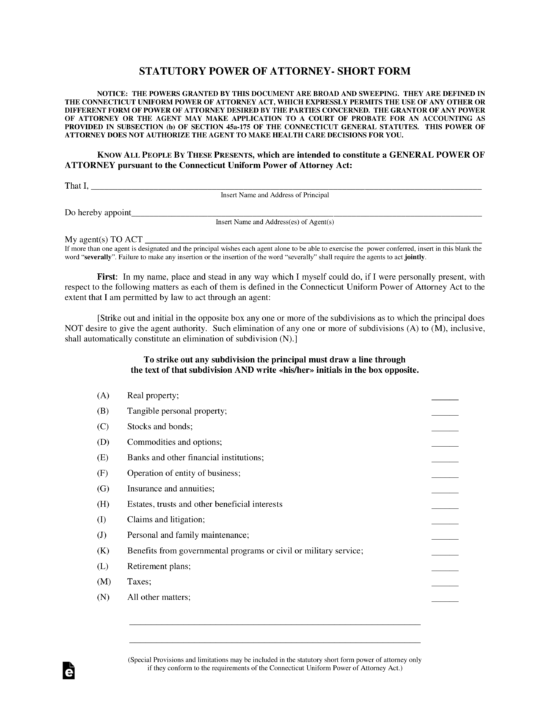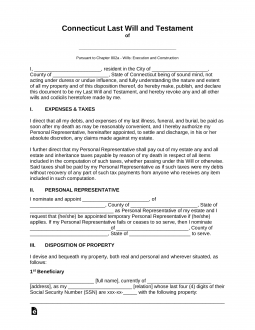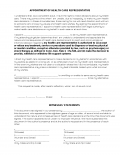Updated November 15, 2023
A Connecticut last will and testament is a legal document that provides written instructions for the distribution of a person’s personal, real, fiduciary, and digital property upon their death. This document allows the designated beneficiaries to inherit the testator’s properties without going through probate.
Signing Requirements
The signing must be in the presence of two witnesses.[1]
State Definition
“Will” and “Trust Instrument” include, respectively, codicils to a will and amendments to a trust as the context may require.[2]
Related Forms
Download: PDF
 Durable (Financial) Power of Attorney
Durable (Financial) Power of Attorney
Download: PDF, MS Word, OpenDocument



